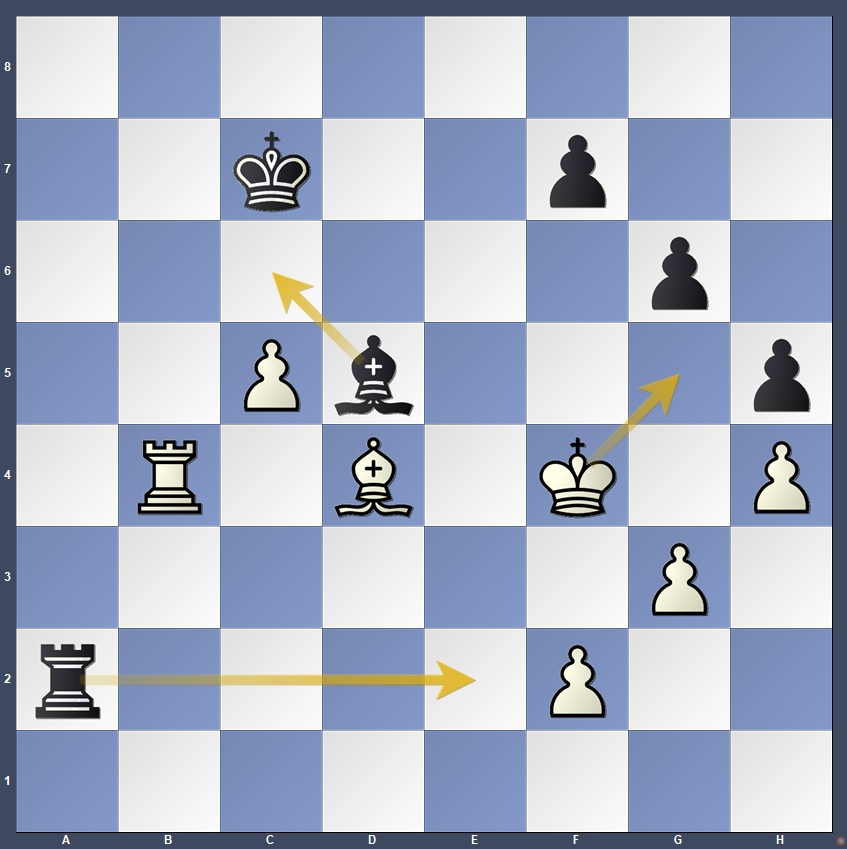
World Champion Ju Wenjun equalized the score in Game 3 of the FIDE Women’s World Championship, redeeming her endgame blunder in Game 2 with precise and elegant play today. In a battle that lasted over five hours and 87 moves, Tan Zhongyi blundered on move 60, allowing Ju to seize the advantage and play an instructive endgame with the principle of two weaknesses, ultimately claiming victory.
The playing hall today was graced by four Women’s World Champions; the reigning champion and challenger, along with Zhu Chen and Xu Yuhua, the second and third women’s world champions from China. Chen, the current FIDE Treasurer, and Yuhua, Secretary General of the Chinese Chess Association, made the ceremonial first moves on the board.

Following the ceremony, the clock was started and the game commenced. It featured a repeat of the first game’s Sicilian, where the World Champion introduced 3.c4, the Kramnik Variation, a rare sideline occasionally seen at the highest level, including during the Carlsen-Caruana World Championship match. It was a curious choice, as statistics tend to favor Black in this line. Tan Zhongyi paused to consider her response, and soon the players entered a completely uncharted position. It was clear that both had exited home preparation, as they began using significant time on their moves.
The game transitioned into a position where both players had isolated pawns – White on c3 and Black on d5, with Ju once again at a time disadvantage. Understandably so, as the position remained balanced and called for subtle maneuvering. With the white pieces, Ju had to look for chances to create imbalances, prolong the game, and prevent Black from steering it toward a draw – without taking undue risks so early in the match. Black managed to simplify with a series of trades, and the game seemed to be heading toward a dry draw. However, the position was still rich in tactical possibilities and required precise play. This match has shown that even seemingly equal positions are far from over – as evidenced by Ju’s decisive blunder in Game 2.

Ju held the initiative, with active pieces and the bishop pair, while Tan’s position was more passive, putting her on the defensive and having to remain solid. It was far easier for White to find natural moves, while Black faced challenges. True to her style, Ju kept pressing, attempting to squeeze out chances, though her time management remained a concern, having cost her the previous game. Tan took advantage of this by playing confidently and quickly, blitzing out moves and putting the pressure on Ju.
An important moment came on move 37:
White has just captured the d5 pawn, and the only move for Black was the tricky 37…Ne3, preparing to recapture the pawn. Anything else would leave White a pawn up with dominant pieces. After some thought, Tan found the only move, and Ju, having anticipated this, responded immediately with 38.h4, the best follow-up. After 38…Qg4, Black remained a pawn down and had to choose the least harmful version of the position. At this point, Ju’s body language shifted – she sat upright and focused, while Tan began to consume more time. This was Ju’s domain: technical positions. As FIDE commentator Evgenij Miroshnichenko noted, “A game of chess has a fantastic amount of resources for both sides.”
Following a series of forced trades, the game simplified into an endgame with opposite-colored bishops with a pair of rooks still on the board. White held an extra passed pawn on c3, and although the position remained theoretically equal, the players reached the additional time control at move 40 with a long endgame ahead. The c-pawn was difficult to advance, and Ju needed a weakness on the kingside to make progress. She continued pressing, and her opportunity arrived on move 60.

Black committed a critical error with 60…Bc6? The idea of trading the rooks was correct, but the execution was flawed. It was essential not to remove protection from f7-pawn and while keeping White’s king at bay with 60…Re2! The key is to meet 61.Kg5 with 61…Re4! As played, after 61.Kg5, trouble loomed. 61…Ra4 failed to the intermediate 62.Be5+, and after 62…Ke7 63.Rb2, White preserved the rooks – a crucial detail, as a pure opposite-colored bishop endgame would likely end in a draw. From there, Ju’s plan was clear: her king advanced to g7, the rook stayed active, and the c-pawn became a growing threat. Black, by contrast, had active counterplay. Her weak f7-pawn and the advancing c-pawn were too much to handle.

What kept viewers on edge was Ju’s time pressure. But this is the reigning Women’s World Blitz Champion, and even with only minutes on the clock, she navigated the complications masterfully. She confidently found the best moves and brought home a well-deserved win. In the post-game press conference, she said that the endgame was relatively straightforward, so her low time did not concern her and after 73.f3 she felt she was winning.
We have witnessed endgame magic from both players in the last two games, where their ability to keep pushing in equal positions, and ultimately yield decisive results, is highly admirable. It surely serves as a lesson to not give up, and beautifully shows the infinite possibilities in chess. Ironically, things are not always clear-cut black and white.

With the score once again leveled, and two decisive results in the first three games, the match is shaping up to be nothing short of exciting. The fourth game will be played on Monday, April 7, at 3 PM local time in Shanghai, with Tan Zhongyi playing White.
FACT SHEET, Game 3, FIDE Women’s World Championship 2025:
White: Tan Zhongyi
Black: Ju Wenjun
Result: 0–1
Opening: Sicilian Defense
Game length: 87 moves
Match score: 1.5–1.5
Follow FIDE’s social media channels for updates, tune into YouTube for live commentary and coverage, and visit the official match website for more information.
Written by Charlize van Zyl
Photos: Anna Shtourman
Official website: womenworldchampionship2025.fide.com/
About the Match
The 2025 FIDE Women’s World Chess Championship match between Ju Wenjun and Tan Zhongyi follows a 12-game format. The first player to score 6.5 points will be declared the winner.
The time control for each game is 90 minutes for the first 40 moves, followed by 30 minutes for the rest of the game, with an increment of 30 seconds per move starting from move 1.
If the match is tied at 6-6 after all 12 games, a tiebreak will determine the champion. The tiebreak procedure involves a series of rapid and, if necessary, blitz games to ensure a decisive outcome.


